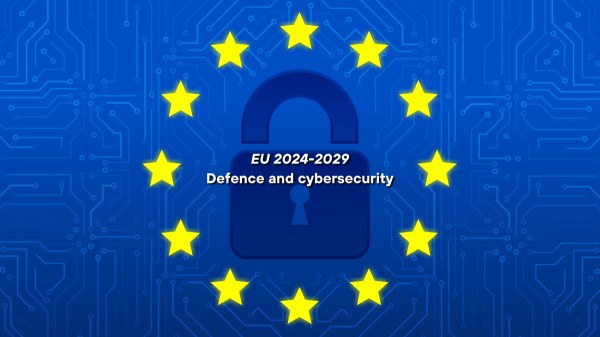In early 2022, the question was raised whether over-the-top (OTT) players, among them the Big Tech, should pay for connectivity services they receive from telecommunications operators. Telcos argue that the large traffic some OTTs are injecting into their networks requires high investments in capacity, and that the return of these is not clear unless new revenue sources emerge.
On the other hand, OTTs argue that the telco service market is a one-sided market. Consequently, telcos should be able to recover their investment by charging the end customer, without recourse to other agents in the value chain. Doing this would imply that the telco market is two-sided, something that, according to OTTs, it is not.
What is a two-sided market?
To clarify the debate, it is helpful to start by defining the term under discussion. A two-sided market is a market in which a firm sells two different products to two groups of customers, while recognizing that the demand from one group of consumers depends on the demand from the other group and, possibly, vice versa. In other words, the demands on the two sides of the market are linked; this link is usually named indirect network effect. Note that this definition may easily be extended to any number of sides, so economists tend to talk also about multi-side markets.
The following are good and well-known examples of two-sided markets:
- media markets, where firms sell content to the audience (the ‘eyeballs’), and advertising space to advertisers;
- payment markets, where firms sell the use of a card to buyers and that of a point-of-sale (POS) terminal to shops, and
- online intermediaries, such as Booking or Uber, which sell their services to buyers (users) and sellers (hotels in the case of Booking, drivers in the case of Uber).
How to spot a two-sided market
While the definition above is conceptually useful to classify markets as single-, double-, or multi-sided, it does not provide information on which are the structural features that make the market belong to any of those categories.
Interestingly, the economic theory of two-sided markets has not concerned itself with this question. Its focus is instead on optimal fixation of prices, that is, how to price both sides of the market to maximize social welfare. This means, of course, that markets are not structurally single or double-sided – rather it depends on the business model by which entrepreneurs generate their revenues, whether from one, two, or more sides of their market, and on whether their activity proves sustainable.
Sustainable business models, in turn, depend on customer preferences, at least they do in an unhampered market. And finally, customer preferences are not static, but change with time, and so must the business models in order to remain viable.
In sum, markets are NOT single- or double-sided per se. Markets take one or other shape in each moment, depending on plenty of circumstances and specially on evolving consumer preferences. This means that a previously one-sided market may evolve into a double- or multi-sided one, and the other way around, if the circumstances of that market force it to work in a different way.
How to become a two-sided market
So, how can a firm evolve its one-sided business into a two-sided business? It is easy: it goes to the group of users, which could evolve into the second-side and make them an offer, taking into account its differential features. According to economic theory, some adjustments may also have to be made to the original group of customers so that the offer becomes more attractive to the new intended side. A recent example from the video streaming industry illustrates this. As traditional customers (the audience) have become increasingly price sensitive, certain streaming platforms today propose new packages for its content with lower prices, but also advertisement interruptions. In this way, these platforms intend to open a ‘second’ side to its market, the side of advertisers, until now inexistent. While only time will tell whether the initiative is successful or not the point is that they are allowed to try this without any interference.
Telecommunications markets: One or two sides?
Historically, telco operators have obtained their revenues predominantly from the end-customer side. This has remained the case even in recent years when the presence of OTTs has become truly ubiquitous and thus fundamental to the data services business case (as opposed to the traditional voice-based model, mainly driven by user-generated content). It would be difficult to argue that telco services have traditionally behaved as a two-sided market. It has undoubtedly behaved as a one-sided market.
However, this circumstance should not hinder the telco market from evolving to a two-sided market with respect to end customers and OTTs, in which each of those market segments is one of the sides. Clearly, both groups of customers have heterogeneous needs. It is also easy to argue that there are indirect network effects: the more end customers the telco has, the more valuable it is for OTTs and the more OTTs should be interested in the services provided by the telco. Conversely, the more OTTs are providing services through the telco network, the more value will end customers tend to perceive.
Telcos becoming a two-sided market should be just an entrepreneurial decision and, as such, subject to the discovery process of trial and error associated with every entrepreneurial activity.
Why all the fuss about sides?
So why has this economical debate reached the public fora? Why cannot EU telco operators choose, as any other economic agent, to look for another side to their market without a public discussion? Telcos just want to tap new revenue sources; why would they need the policy maker for that, while other companies or markets do not need such intervention to evolve into a two- or multiple-sided market?
The fact is that the EU telco industry is heavily regulated and its market is far from unhampered. The telco industry must comply with the Open Internet Regulation so that the right to internet access of end users is fully protected. This together with asymmetrical access regulation based on Significant Market Power, obligations of interoperability, and an antitrust policy focused on granting a minimum number of competitors in the market at any price, makes all but impossible, not only to negotiate with OTTs, to even bring them to the negotiation table.
The search of this second side for their market is thus impeded precisely for the most promising customer group they can think of: the OTTs, the biggest traffic generator of them all. It is unfortunate but not surprising that the only way forward for telcos is to seek the help of policy makers. Telcos are just asking them to untangle this mess by requesting an obligation on qualifying OTTs to negotiate with them the conditions for the provided service, an obligation that will enable the apparition of the second side of the market, and that would be unnecessary in an unhampered market.
Conclusion: the number and nature of market sides are not given, they must evolve with consumer preferences
In an unhampered market, entrepreneurs define the sides in the typical discovery process of trial-and-error. There are no structural features in the markets that cause them to be single-, double-, or multi-sided. The number of sides in a given market is actually caused by business models in response to individual preferences and thus evolves with them.
Telecommunications markets are no exception to this rule. As in other industries, the number of sides of the telco market should at each moment depend on the concrete business model under which the operators think they can be sustainable. What is exceptional, on the contrary, is the existence of firms (in this case, the OTTs) able to reject negotiating the terms of services they are enjoying up to the point of refusing to pay for them.
How is it possible that the providers of the services (ie, the telco firms) find it impossible to compel them to even negotiate those conditions? Can something similar be seen in any other market? That OTTs support their claim on the wrong argument that telcos are a one-sided market is purely rhetorical and designed to mask their unwillingness to negotiate. It may be interesting from an academic point of view, but not especially relevant.
The exceptional situation that EU Telco operators are facing concerning the natural evolution to a doble or multiple-sided market is mostly due to telco specific regulation. And because of that, unfortunately, it seems that only regulation will be able to solve its unfair and undesirable effects.










